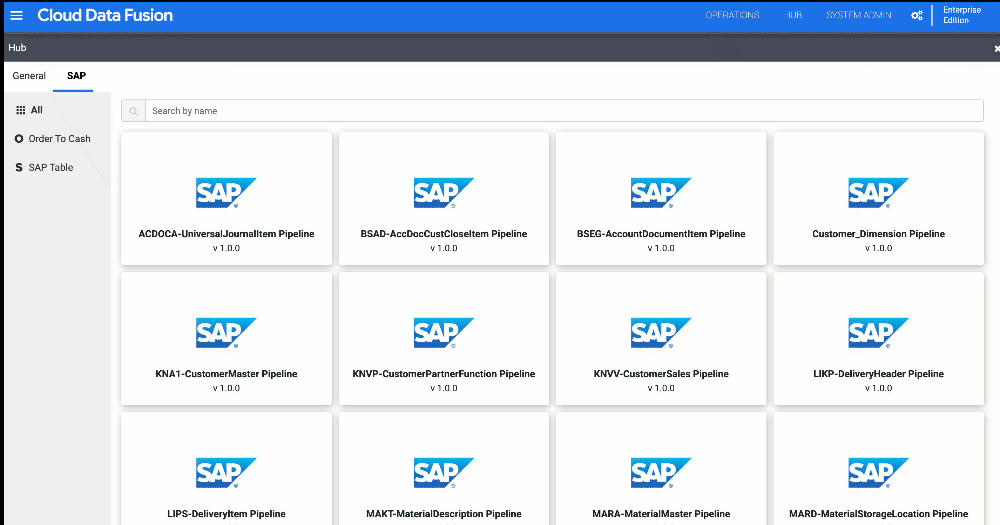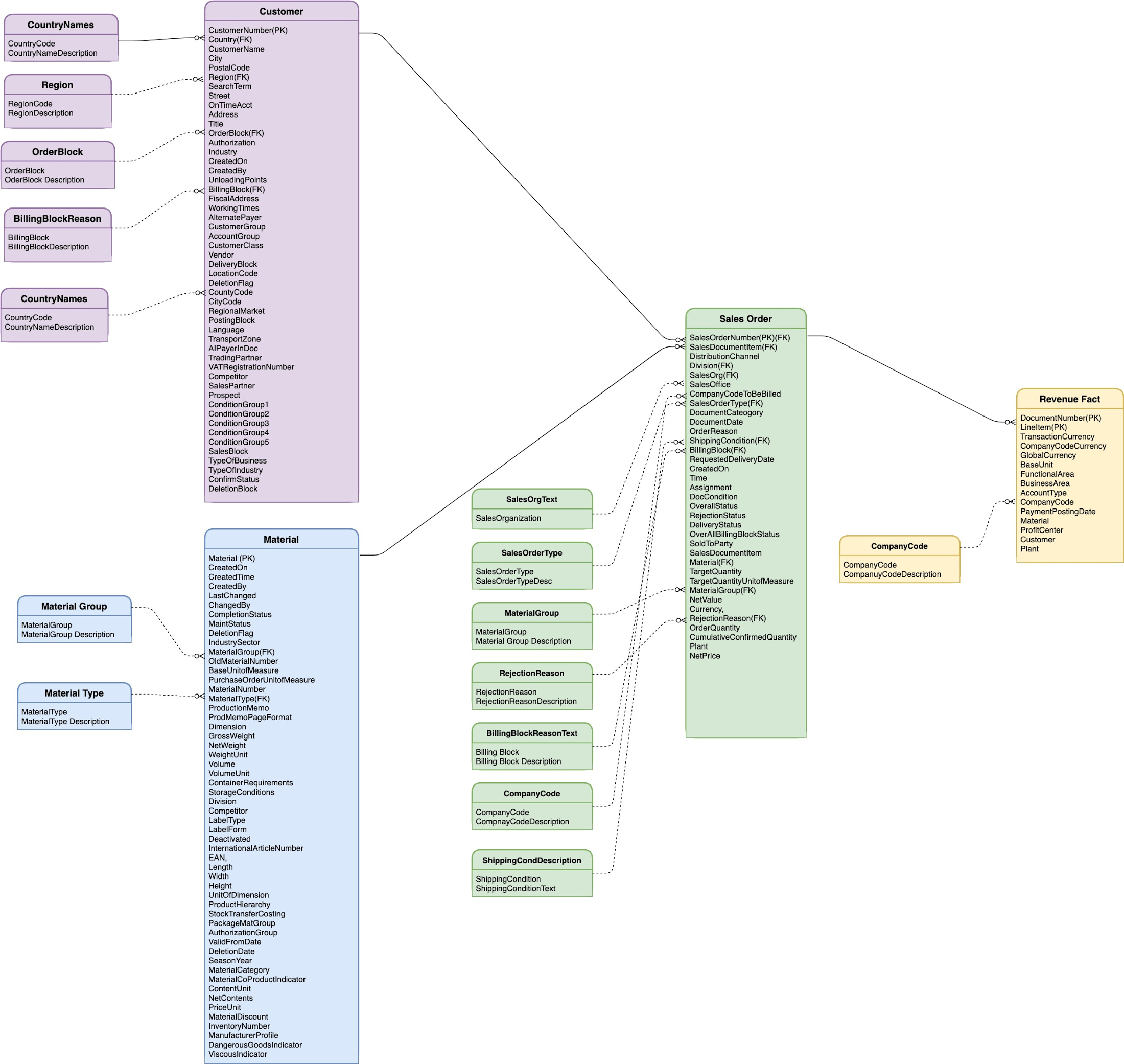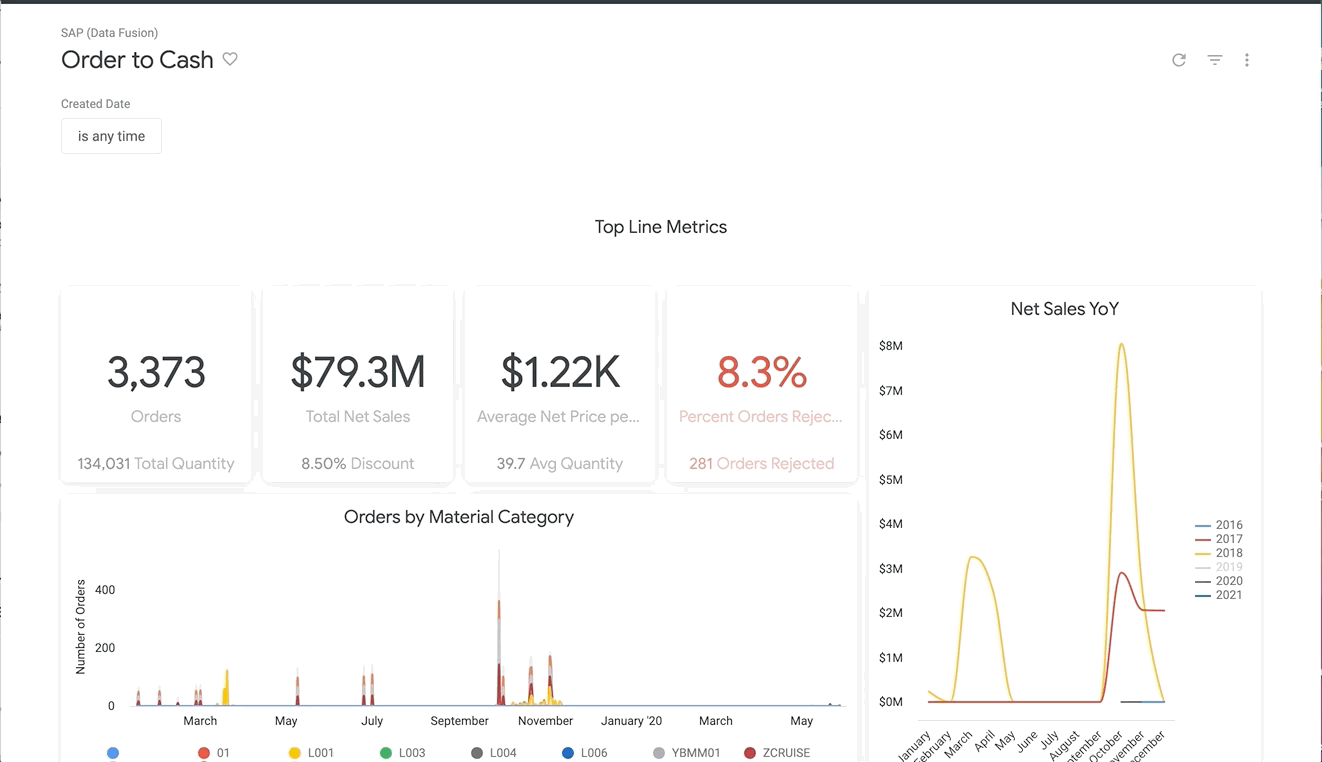SAP Accelerator for Order to Cash
Leigha Jarett
Developer Advocate, Looker at Google Cloud
Chaitanya (Chai) Pydimukkala
Head of Products, Databases
Try Google Cloud
Start building on Google Cloud with $300 in free credits and 20+ always free products.
Free trialRecently we announced SAP Integration with Cloud Data Fusion, Google Cloud’s native data integration platform to seamlessly move data out of SAP Business Suite, SAP ERP and S4/HANA. This simplifies integrating SAP data into BigQuery and gives organizations the opportunity to gain invaluable insights using Looker. Even with a reliable and scalable integration platform like Cloud Data Fusion, creating pipelines to incorporate mission critical enterprise data into warehouses can be tedious. This not only involves building integrations but also creating dimensional models and analytics dashboards. In order to understand this, we need to take a closer look at the business processes in enterprises.
Business Processes in Enterprises
Enterprises of all sizes need to have well defined and productive processes to optimize their operations and maximize profits. Most enterprises have a canonical set of processes that can be implemented in a single ERP system like SAP or be distributed across multiple systems each providing key functionality of the process chain. Such long running processes are referred to as end-to-end business flows. These business processes need to be carefully analysed to understand the state of the business.
There are numerous intertwined processes in enterprises that are extremely complex. Order to Cash, Procure to Pay and Supply Chain to name just a few. Understanding these processes can be difficult, let alone integrating complex systems and datasets for analytics. Not only does building up a scalable analytics platform on top of these processes require time and resources, but it also needs collaboration between domain experts, business analysts, data engineers , ETL developers and business stakeholders.
What are SAP Accelerators?
In order to place SAP customers in the center of such diverse possibilities of value that Google Cloud offers SAP Accelerators. These are samples that are included as part of the core data analytics products to kick start analytics on SAP data. In any analytics scenario, the first step is to bring SAP data as a first class citizen into BigQuery. Data Integration remains the first and foremost requirement to deliver value added services on SAP Data. Integration remains one of the complex problems and to address this, we are providing more than 50 pipelines in Cloud Data Fusion to rapidly onboard SAP data. In order to start analysing this data, it is necessary to have required dimensional models on BigQuery. Cloud Data Fusion has capabilities built into the product to create the dimensional models while integrating SAP data. In addition, Looker will provide out of the box looker blocks to analyze the data via Looker dashboard.
What is Order to Cash?
Order to Cash is one such critical business process that includes order management, order fulfillment and shipping, invoice generation and payment, and accounts receivable and reporting. A typical order to cash process involves the creation and maintenance of customers, materials, pricing, sales orders, shipping and billing. Most enterprises depend on these business processes, and they measure success using key performance indicators (KPI’s) around orders, revenues, sales etc. As such, It becomes critical for key stakeholders to get insights into these metrics like the total revenue, discounting practices, and profit margin to effectively measure the health of the business, develop new revenue models and improve customer experience.
SAP Accelerator for Order to Cash
We are excited to announce Google Cloud SAP Accelerators. These accelerators are blueprints and examples that give customers a quick start for specific order to cash scenarios. The accelerator is a blueprint and is an example that needs to be customized as per customer needs
From an implementation perspective, Google offers the following components:
Data integration and transformation using Google Cloud Data Fusion
SAP Connector: SAP Table Reader connector that can be used for initial data load for all tables and incremental data load for selective tables
Staging Pipelines: These pipelines bring the Raw Data from SAP along with a mapping of abbreviated column names to useful English Column Names.
Transformation Pipelines: These are simplified BQ Execute pipelines that have embedded SQL statements that can be easily customized for customer scenarios.
Critical pipelines and Key Business Entities in Cloud Data Fusion for Order to Cash.
Key Business Entities in the Order to Cash Cycle | Accelerator Pipelines that deliver data for supporting analytics in this part of the cycle. |
A Customer could be a person or entity with whom the organization does business with. These three tables capture the different details of the Customer as it pertains to the business. Information from these tables contribute to the customer_dimension in the Data Warehouse Dimensional Layer. | KNA1_CustomerMaster |
KNVV_CustomerSales | |
KNVP_CustomerPartnerFunction | |
Material or Product is the commodity that is traded between the Enterprise and its Customers. Information from these tables contribute to the material_dimension in the Data Warehouse Dimensional Layer. | MARA_MaterialMaster |
MARD_MaterialStorageLocation | |
The order to cash cycle kicks at the moment the system receives an order from the customer. The order can have multiple forms, it could be an online order from the customer directly on your website, or through your sales team over an email, however, the best practice is to automate your order management for an efficient order to cash process. | VBAK_SalesDocumentHeader |
VBAP_SalesDocumentItem | |
VBEP_SalesDocumentSchedule | |
The next step in the cycle is order fulfillment and shipping. This part of the cycle largely applies to businesses dealing with physical goods where the inventory personnel should be notified with the accurate details of the order to proceed with fulfillment and shipping. | LIKP_DeliveryHeader |
LIPS_DeliveryItem | |
The third step in the cycle is invoice generation and payment. The customer should receive an invoice for the order that includes all the details about the order as individual line items along with additional information such as taxes and discounts if applicable. The customer should also have the means to make the payment for the invoice raised. | VBRK_BillingHeader |
VBRP_BillingLineItem | |
The cycle is completed once the payment is logged in your accounting books as part of the accounts receivable against the raised order. | ACDOCA_UniversalJournalItem |
In addition, there about close 50 pipelines that are available in the Data Fusion hub to load the staging schema on BigQuery


Target Schemas in Google BigQuery
Staging Dataset: The staging dataset is where data extracted from SAP through the Staging Pipelines lands
Dimension Dataset: After the staging dataset has landed, transformation pipelines are used to transform and capture key fields used for reporting. In the order to cash accelerator, two tables are created: customer_dimension, which contains information about each customer and material_dimension, which contains information about each material
Fact Dataset: In addition to the dimension dataset, a fact dataset is also created, which contains tables that can be then aggregated in a Business Intelligence tool to calculate KPIs of interest. The order to cash accelerator provides two tables: sales_order_fact, which contains metrics around orders and revenue_fact, which contains metrics around revenue


Looker Block
Pre-built Semantic Model: The Looker block can be installed through Looker’s in-app marketplace and comes with a pre-packaged LookML model. Here, we have defined KPIs which can be directly used or further customized based on organizational needs
Operational Dashboards: Beyond the LookML model, this block comes with two dashboards that allow users to jump right in and begin analyzing their SAP data. One dashboard presents high-level trends in revenue while the other allows investigators to drill in and focus on a single customer’s behavior


With these integrations, teams spend less time developing data pipelines, defining key metrics and building out visualizations, and instead spend more time analyzing the information and making informed business decisions.
Getting Started with SAP Integrations
For information on how to configure and run the Cloud Data Fusion pipelines, see the SAP Table Reader Guide and the blog. You can find additional information on the SAP Accelerator for Order to Cash here.
The Looker block will be released in preview into the Looker marketplace in early June. The LookML powering the block is publicly available in this GitHub repository. You can find details on accessing the Looker marketplace and installing the block here. If you do not have access to a Looker instance and want to try out the block, you can sign up for a free trial here.


